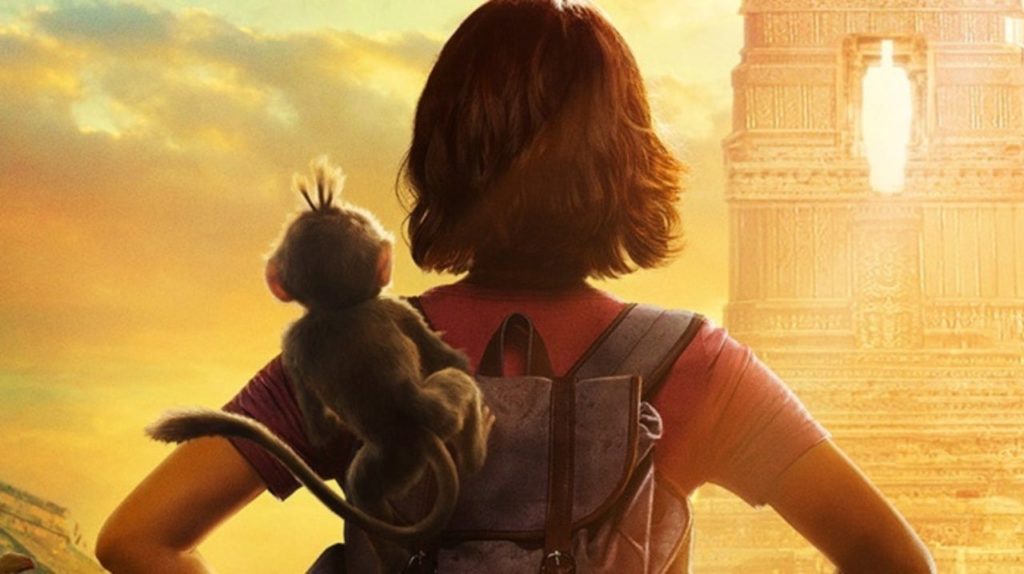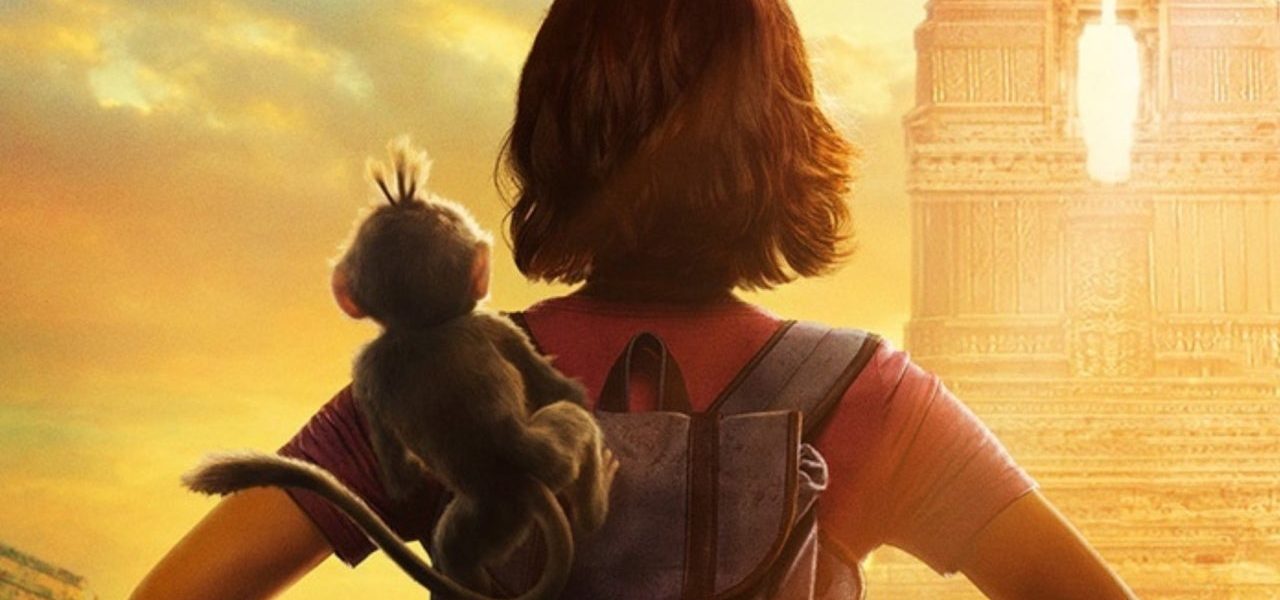DIRECTED BY: JAMES BOBIN/2019
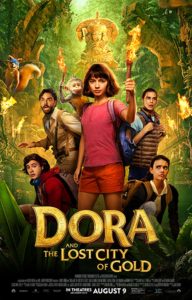
“Dora, Dora, Dora the explorer; Boots and super cool as Dora. Dora needs your help, grab your backpack, let’s go–jump in, vamonos!“
These words greeted young children (and adults) at the start of each and every episode of Dora the Explorer which has now been around for some 20 years. Dora, and her cousin Diego, had a good run, but their time would seem to have been firmly in the past. So, why are we getting a movie all of these years later? It seemed to be the question that was asked all around when this project was announced, but now that the film is out, I have to say, “who needs conventional wisdom”? Dora, the bright-eyed Latina girl who sought to challenge our kids imagination, teach Spanish, and stop the thieving fox named Swiper by yelling “Swiper, no swiping”, may be just the person we need in our culture at this point in time.
In the film, Dora and the Lost City of Gold, Dora is a 6-year old girl (played here by Madelyn Miranda) who lives with her parents Cole (Michael Pena) and Elena (Eva Longoria), and her cousin Diego (6-year old Diego is played by Malachi Barton). There are some great nods to the television show as the precocious girl breaks the fourth wall asking the audience to say “delicioso” as her parents look nervously around for who their daughter might be talking to.
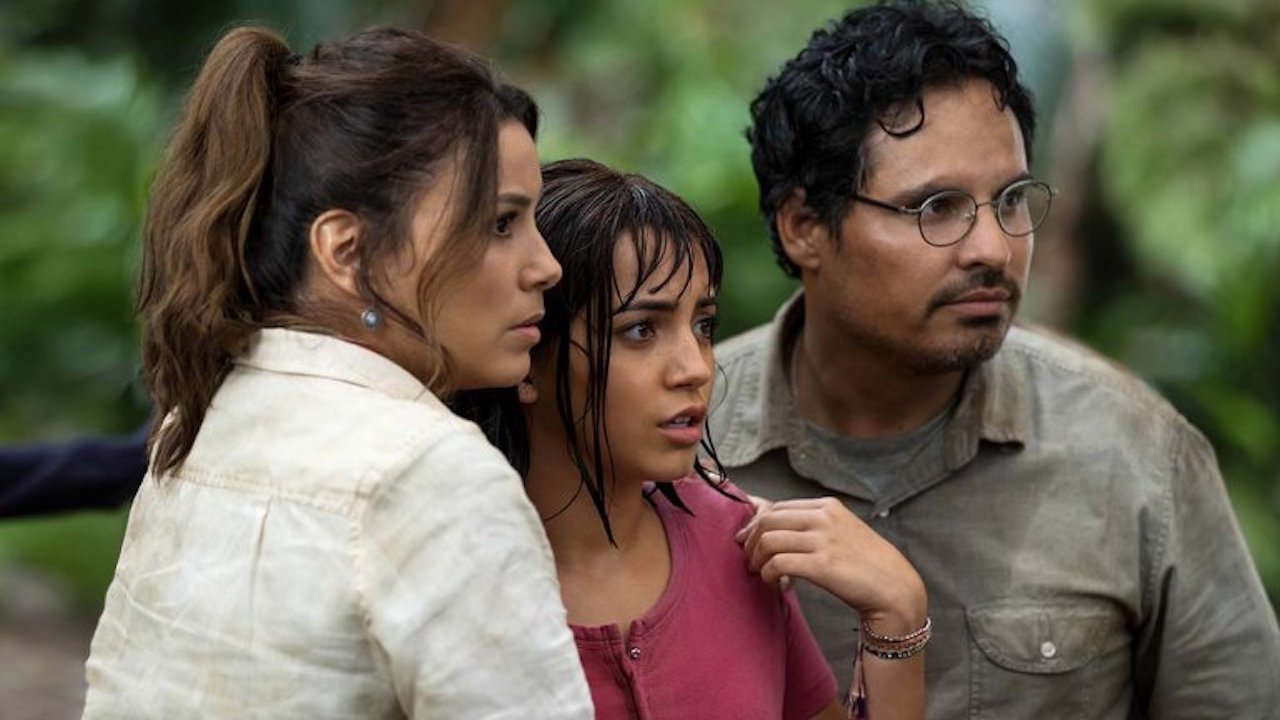
Eventually Diego moves to “the city” (Los Angeles), away from the jungle, leaving his best friend, Dora, to grow up with her monkey Boots, in the jungle where her parents are searching for a lost Inca civilization. Fast forward 10 years and the now 16-year old Dora (Isabela Moner) is told that she will be moving to the city to go to school so that her parents can head into some more dangerous territory, thinking they may have found this ancient city. Her parents warn her of the dangers of going to raves, and plead with her to “stay safe”. But Dora is an “explorer”, safe is secondary to the adventure of learning.
Dora is obviously out of her element, which is the jungle, when she moves to the city. Her childlike naivete from the show is played up for laughs as her abundant optimism stands in stark contrast to the high school kids around her. It even stands in contrast to the 16-year old Diego (Jeff Wahlberg) who isn’t the same happy kid he was when Dora was his best friend as they explored the jungle together. He tries to get her to tone it down, but nothing can dampen her optimism.
The film kicks into high gear when on a field trip, Dora, and her small group of fellow students that include Diego, class academic Sammy (Madeleine Madden), and social outcast Randy (Nicholas Coombe) are invited to see an exhibit at the museum before it opens. It turns out to be a trap, and the 4 teens find themselves thousands of miles away being unloaded in a cargo box in the jungle of Peru.
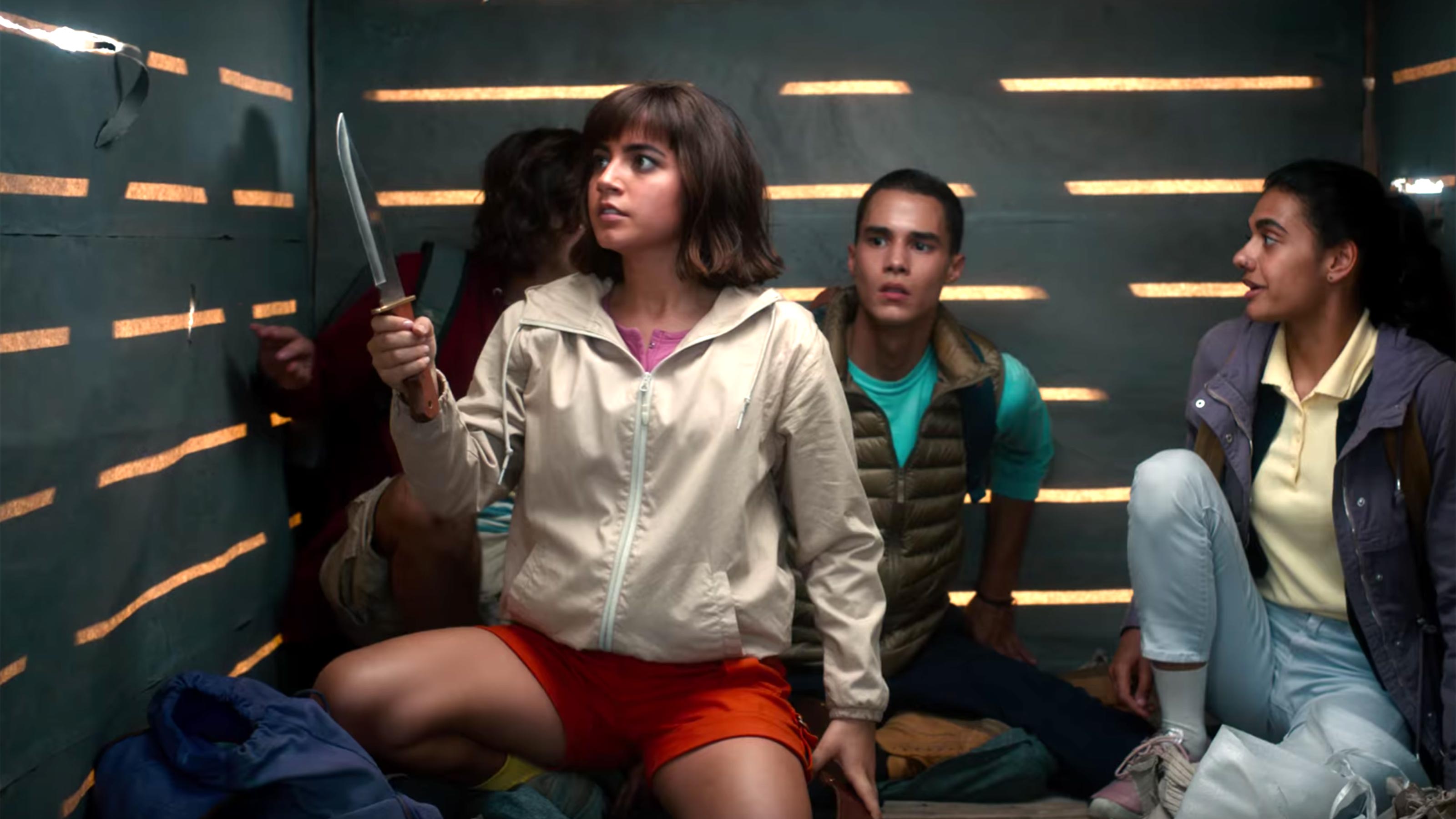
They are eventually rescued by a man named Alejandro (Eugenio Derbez) who has Dora’s father’s journal and who informs them that her parents are missing but who offers to help them. The kidnappers want to get to the lost city and believe Dora can help them find her parents, whom they believe can locate it. Dora, however, decides to track them down first, now that they’ve escaped, setting up the big adventure that is Dora and the Lost City of Gold.
The film is pretty formulaic by design, but is perfectly self-aware. The writers know exactly who this character was on her show, and who she needs to continue to be, even in a live action film. Dora remains the eternally bubbly and optimistic girl she always was on the show, and the film finds ways to incorporate some of the better loved aspects of the animated show, while updating it for a feature length action film.
While this is a fun, family film that borrows heavily from Lara Croft of Tomb Raider, with nods to Indiana Jones, it stands in sharp contrast to the world we are currently living in, and as a result seems to be exactly the kind of movie we all need to see, and the kind of character we should all become.

First off, as a Latina-based female character from a loving family who all seek to explore, learn, and preserve what is good and pure (in contrast to the ‘evil’ treasure hunters she squares off against), Dora is giving a representation of Hispanic culture that is desperately needed right now. As Eva Longoria mentioned in an interview on the Daily Show, representation is so important because Hispanic culture has largely been seen through the eyes of illegality in films whether it is being associated with illegal drugs, or the current controversy over immigration. Dora’s Isabela Moner has even been on that side of things in the fantastic Sicario: Day of the Saldado. Here, she provides us a better representation of Hispanic culture. One that I witness everyday in my home-state of Texas, the one that much of the country doesn’t seem to really know, based on the largely negative representation they see in television, film, and the news.
Dora’s High School experience mirrors the world we live in where people are divided, and quick to cast those they don’t like, agree with, or understand in the “other” category. Us vs. Them. This is no different than the high school experience we all experienced as teens (and that I see everyday teaching in a Texas High School), but it is a microcosm of what is happening around us politically, socially, and culturally.

Like Sammy, the girl who sees Dora as an automatic rival due to her knowledge and her eternal optimism, we are immediately skeptical, cynical, and unwilling to see good in others, especially if we feel threatened, or even challenged. Dora, however, doesn’t ever long to succumb to this type of thinking, and her willingness to keep pursuing what is right, no matter the cost, certainly makes her stand out in contrast to those around her. She never sees Sammy as a rival, or someone to get past. She sees her as a potential friend. This is maybe naive, but isn’t that what we need more of right now?
Dora doesn’t back away from getting to know Randy either. She immediately finds a connection with him based on his love of stars. Actually, she corrects his t-shirt’s description of where we are in the galaxy, but not as a way to show him how smart she is, but as a way to infuse understanding and wonder into a subject she obviously believes he likes. Her approach doesn’t repel him, it draws him in. When Dora sees Randy is actually the kid who gets picked on and bullied at that school, she ignores Diego’s warning to stay away from Randy so that she isn’t targeted too. Instead, she continues to be who she is, and is kind to everyone, including Randy. She challenges us, through her example, to be kind to others. In her view, even those whose heart is jaded aren’t beyond a future redemption. “Just keep being kind”, seems to be her modus operandi. If only our politicians could learn that one…or anyone on social media for that matter.
While Dora and the Lost City of Gold play this naivete up for laughs, Dora is never the butt of the film’s joke. The laughs are created simply to acknowledge what we in the audience are probably thinking as we first encounter this bright-eyed, optimistic jungle girl who obviously isn’t made for the city life. The joke is on us though. As the movie progresses, like Sammy, we begin to see the authentic and kind nature of this girl, and we realize that we can’t laugh at her anymore, as if she is the joke. We discover that we are the joke. We are the joke when we act just like Sammy and the rest of the high school subculture in the film.
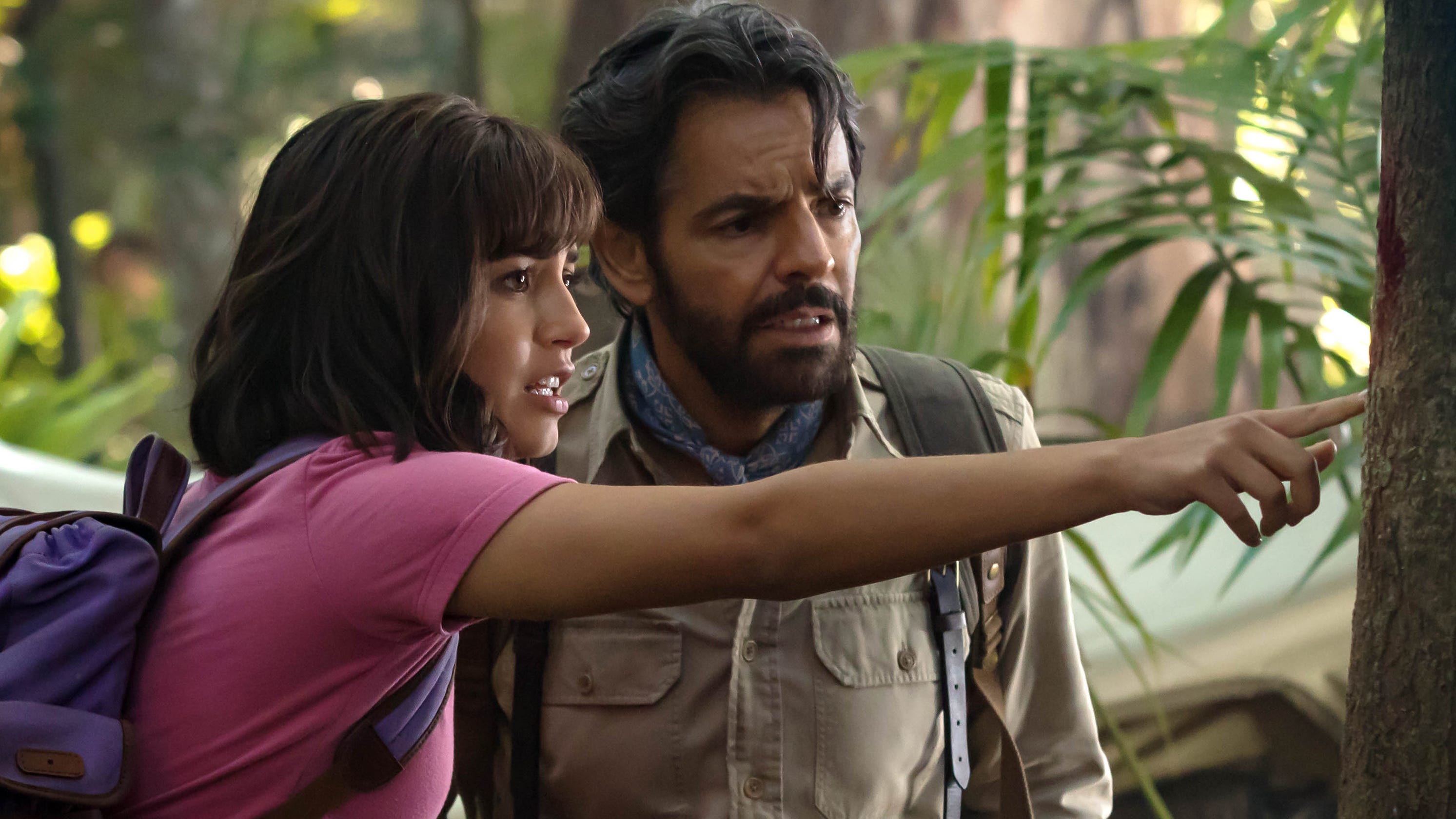
The initial thrust of Dora being the “fish out of water” in this high school culture is that Dora isn’t built for our culture, or “the city” where she finds herself. There is even a sort of “go back to the jungle, where you came from” moment that eerily echoes recent comments and events. Instead of the film mirroring how this has played out in our real life, we see something very different. While we see a Dora who isn’t above getting discouraged, she is also the one who vows to continue to be the wholesome, loving, and good-natured girl that she is. Slowly, it is the culture and the people around her that are being transformed by her goodness as they begin shedding their cynical, skeptical, and angry hearts for new ones.
Of course, at the end of the television show, Dora would always close her show with a unified song of “We Did It!“, bringing a sense of satisfaction and a large smile to the face of my children, who would immediately stand up, and dance and sing with her, and all of her friends. In Dora and the Lost City of Gold, there was still that moment of jubilation that was able to be shared by the whole family. Would it only last through the credits?
As we walked out of the film, I longed that I would shed my cynicism, skepticism, and even the anger I feel as I watch and read the news, or simply live in our world. I wondered what would happen if I, like Dora, would simply choose to live in such a way to help create the world I want, rather than succumbing to the darkness and existing in the world that is? How might our kids…my kids…follow our lead?
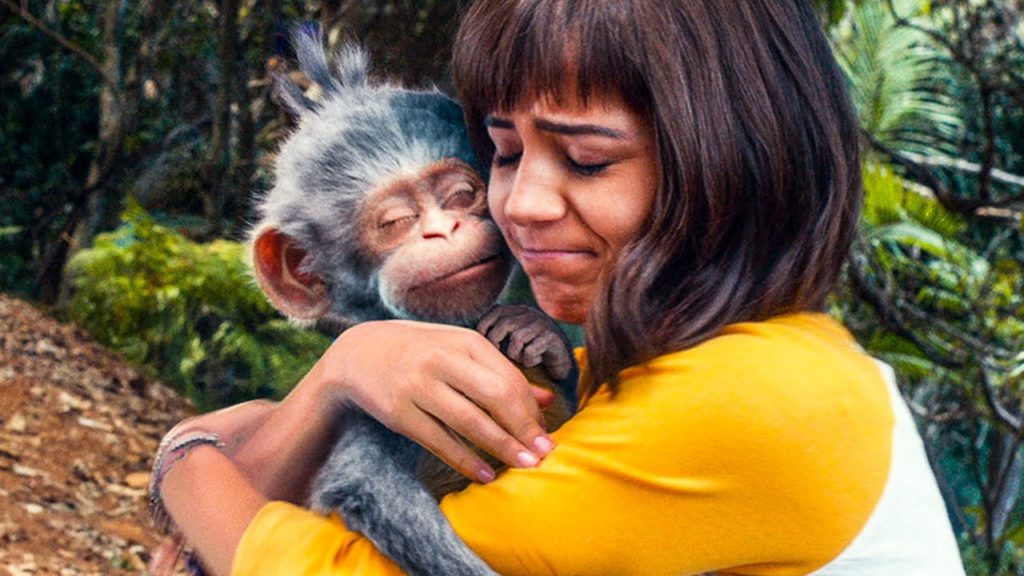
Maybe we need to start “exploring” this different way of living, and participating differently in our world. It could be a world where one sees the best in others, who seeks to build bridges to others, even when we differ. It could be a world where we speak the truth in love, don’t put others down or make them feel less-than, and where we desire truth and understanding above rumors and innuendo.
I know that Dora and the Lost City of Gold is just a kid’s film, based on a 20-year old animated television show, and it may not break box office records. I know that many will bristle at the idea of an optimistic Latina teaching us to stop “treasure hunting” and instead to start exploring our world, seeing all the wonderful things in it. I know this, but yet I felt that this film, maybe without meaning to, represents something so much more.
Representation is so important, Eva Longoria said as she was discussing the film’s desire to showcase a positive Hispanic image through its characters and family presentation. She isn’t wrong to see this ideal and champion it. I just think that Dora goes to a place that is much greater than that.
Dora isn’t just a positive Hispanic icon. She goes beyond that and represents an even greater ideal, positivity, and outlook that the world needs. She represents an ideal that should transcend any artificial divisions like ethnicity, gender, religion, and political positions. It could even be labeled an old-fashioned ideal, or a theological one, that might initially be dismissed. It all comes down to choosing to love one another. Others have said this, lived it, and even died and been resurrected for it. Dora is not saying something new….its just the latest visual reminder we have in film of an ideal our world so desperately needs right now.
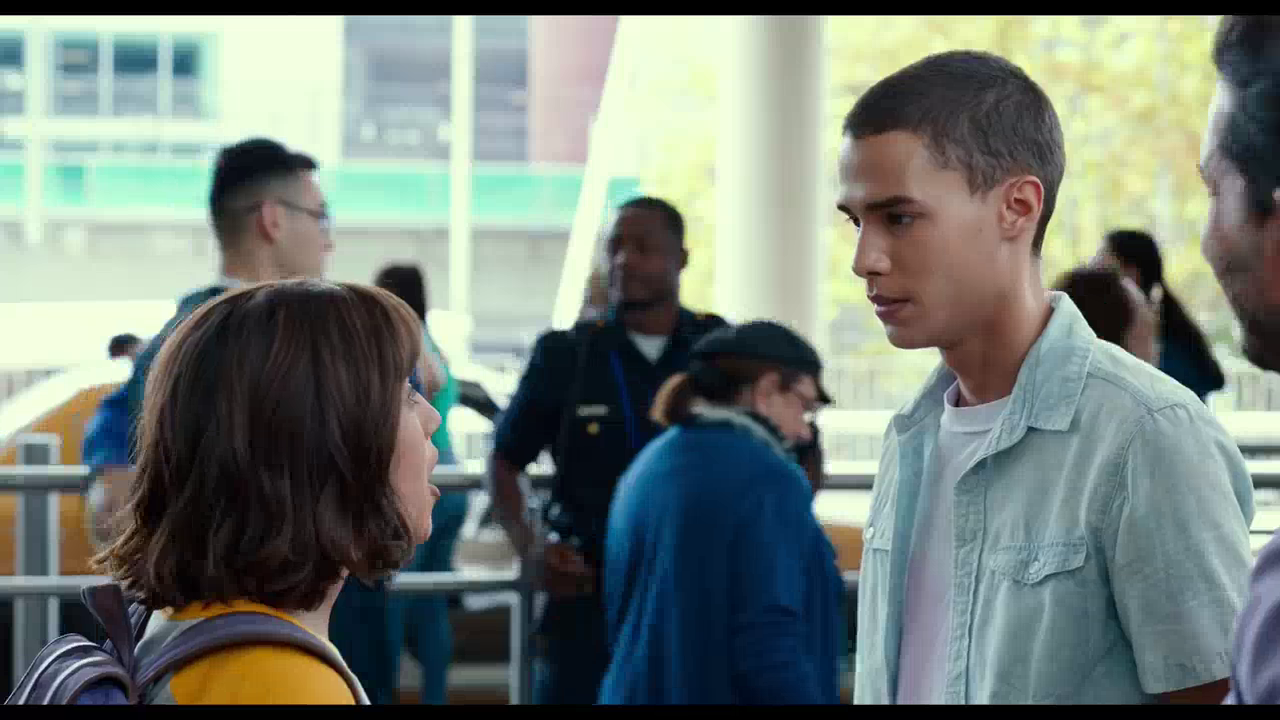
The kind of love, kindness, and compassion we see in Dora and the Lost City of Gold looks like individuals who are thinking more about the needs of others than they are of themselves. It presents a message that encourages us to stop trying to live our lives as treasure hunters, amassing our own treasures at the expense of others, and instead switch our focus to exploring our world, with those around us, finding ways to make this world a better place. If we could do that, we might find a world that we can live in which will serve as even greater treasure that what we could amass for ourself. A treasure that could be shared with others and that is much more valuable than gold. I hope that one day we will all sing “We Did It!”, but before that we need to get started. As the theme song once encouraged us, let us join together and get started.
“Dora needs your help, grab your backpack, let’s go–jump in, vamonos!”
